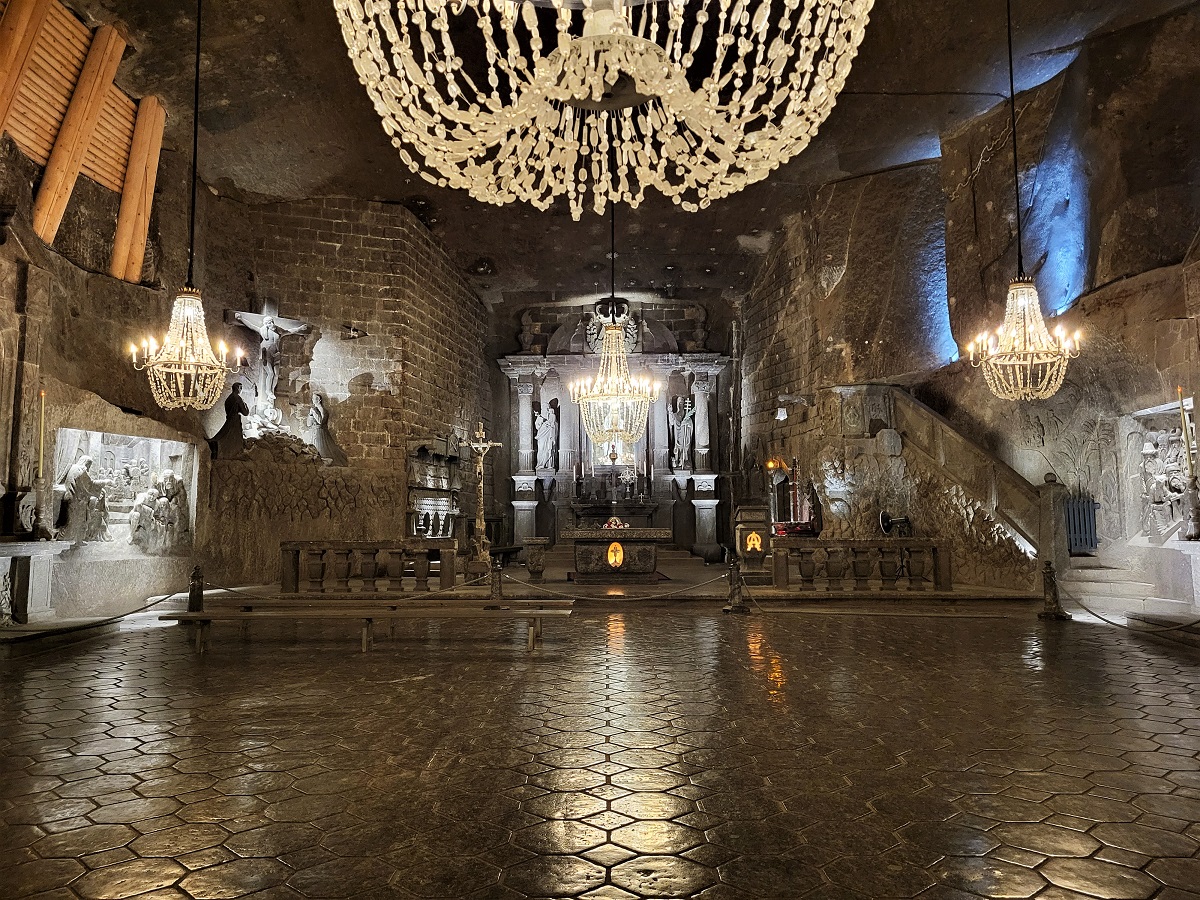Deep beneath the otherwise ordinary Polish town of Wieliczka, you’ll find a showstopping subterranean spectacle of tunnels, chapels, lakes and sculptures, where almost everything is made from salt.

The extraordinary underground world can be found inside the Wieliczka Salt Mine, a former mine that dates back to the mid-13th century.
By the time the mine stopped excavating the mineral in 1996, it had grown into a vast labyrinth encompassing 287km of tunnels and 26 shafts, spread out over nine levels to a depth of 327km.

In 1978, the mine was designated a UNESCO World Heritage Site, alongside Kraków’s Old Town and Wawel Hill – one of the first sites in the world to be given the distinction.
Today the mine is a visitor attraction and museum, where you can explore two per cent of its sprawling network of tunnels.

I’d booked myself onto the Tourist Route, a guided tour that takes visitors around the top three levels of the mine.

After gathering outside the entrance, our group made our way down to the first level, where we soon came across a series of displays that showed how the mine used to work.

Along the route, there were sculptures commemorating various people who had links to the mine.
These included:
- the astronomer Nicolaus Copernicus, who visited in 1493, one of the first tourists to do so
- King Kazimir the Great of Poland (above), who set out the laws that governed salt mining in Poland in 1368
- St Kinga, the mine’s patron saint (below).

Legend has it that St Kinga, the wife of Boleslaw V the Chaste, Duke of Sandomierz, kick started Poland’s lucrative salt trade in the 13th century when she discovered rock salt deposits in the area.

Alongside the statues and displays, the mine also boasts four chapels, the most spectacular of which is St Kinga’s Chapel (above and below).
The cavernous chapel is decorated with intricate carvings (including a replica of Leonardo da Vinci’s The Last Supper, above on the left), decorative features and chandeliers, and is strikingly beautiful.

One of the most incredible things about the chapel, and the salt mine as a whole, is that almost everything you see is made from salt.

The floors, the ceilings, the walls, the sculptures have all been carved from the salt deposits – even the chandelier is made from salt!

It’s hard to fathom that almost everything in this subterranean chamber is made from plain old sodium chloride. It’s a breathtaking sight and an extraordinary work of art.

After spending a little while taking in the delightful scene, we continued our tour by visiting another of the mine’s jaw-dropping features – an underground pool.
The huge salt water lake is mesmerising and I was struck by the vivid colour of the water.

The photogenic scenes kept coming as we moved on to a tall chamber that was dominated by wooden scaffolding and a gorgeous chandelier (above).

From there, it wasn’t long before we found ourselves admiring another picturesque salt water pool (above).
This one had the added bonus of a canal, which had been used in the past to ferry visitors around the mine.
The two-hour tour ended in yet another enormous chamber, the highlight of which was a small art exhibition (below).


